In-Win Goes Where No Case Has Gone Before...Again
At Computex 2018, In-Win will create a PC Case that has wings and transforms into a flying drone, but it can also wash dishes and fold your clothes. But this year you’ll have to settle for the Floating, which is an open case in only the most liberal sense of the term, and the pedestrian Winbot case, a spherical contraption that includes a facial detection scanner, voice recognition, and can take photos. We understand it also can house your PC components.
The Winbot
But let’s start there, before we turn to the latest in shiny objects from In-Win. As you’d guess in a case of the Winbot’s magnitude, it’s got room. It can house an E-ATX motherboard (12”x13”) and graphics cards that are 340mm long and 160mm high. It will provide access to eight PCIe slots, four HDD modules, three 120mm fans up front and two in the back, a 360mm radiator, and PSUs that measure up to 210 x 150 x 96mm. It includes one USB 3.1 Gen 2 Type C port and three USB 3.0 ports, in addition to HD audio.
The dome is made of plexiglass, and the structures inside are made of aluminum. An In-Win representative said that the company is still deciding whether to include some case fans along with the Winbot.

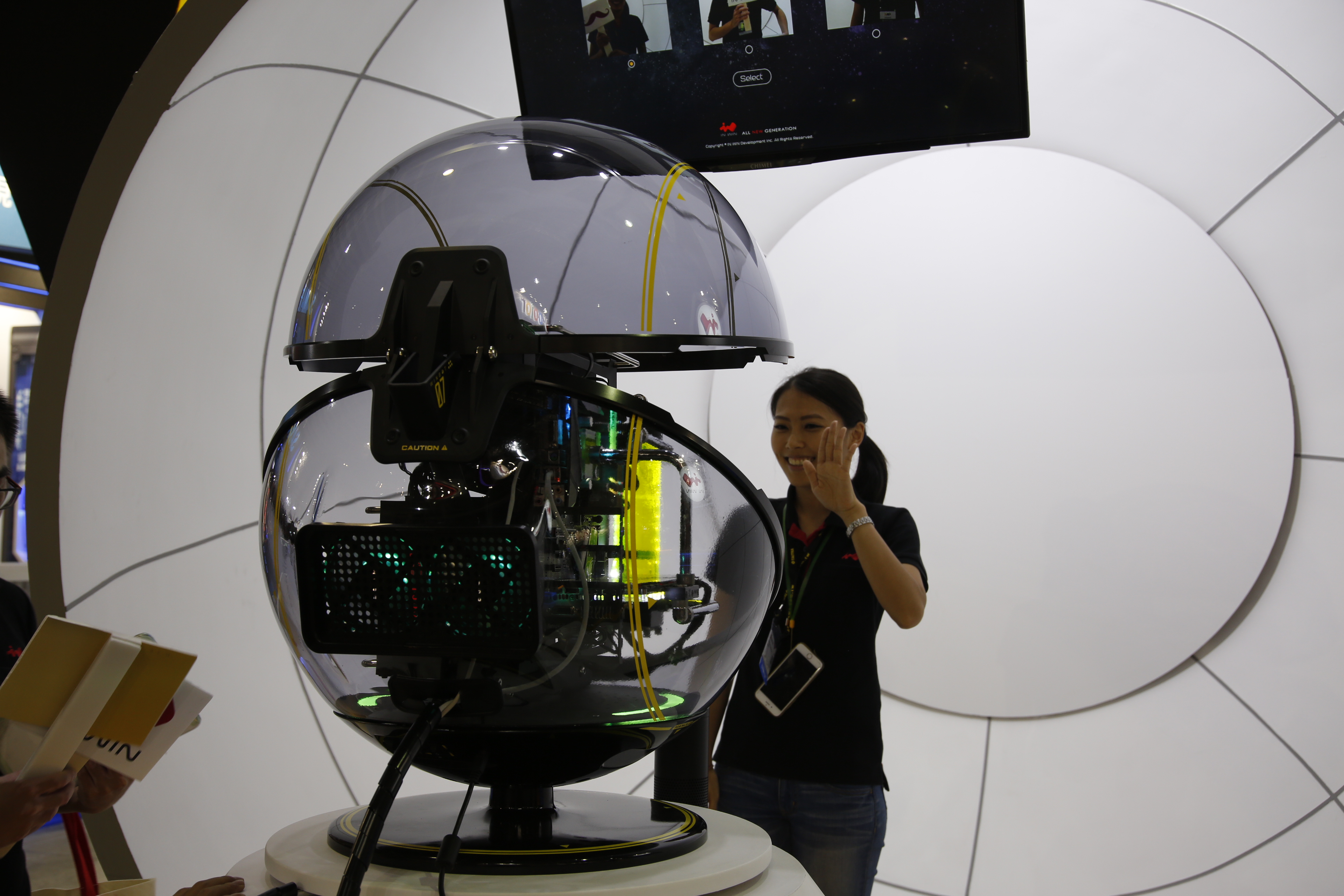
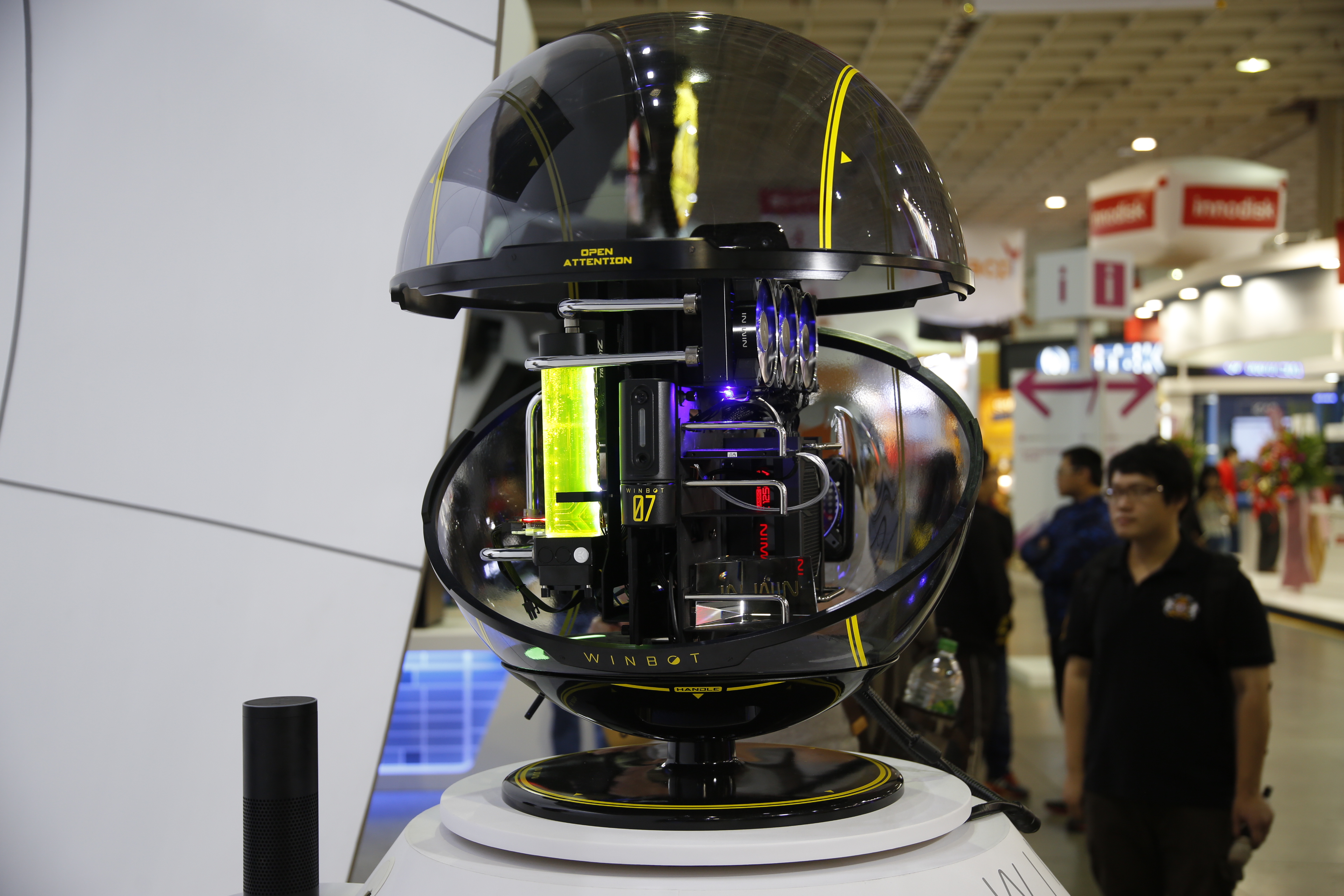
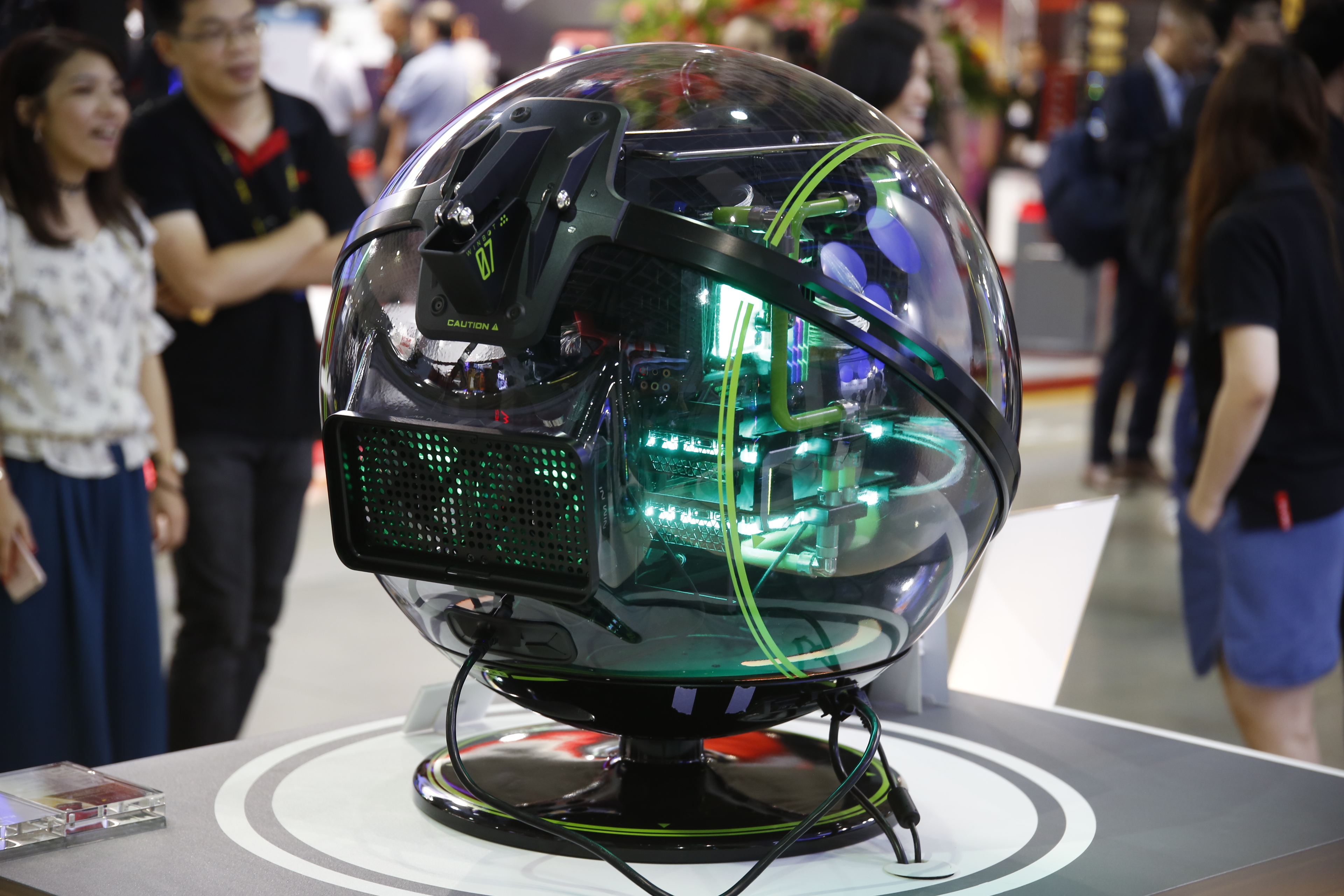
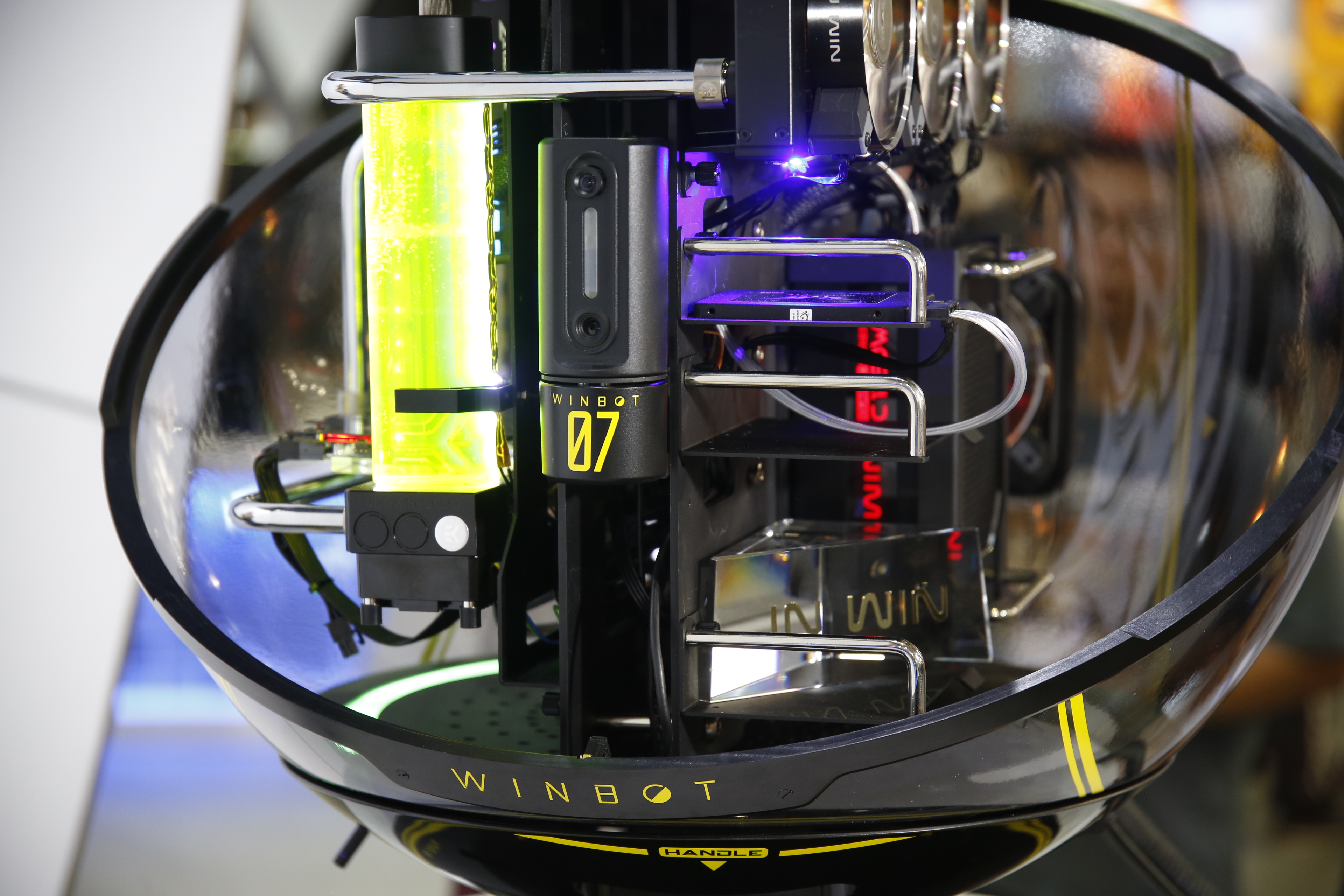
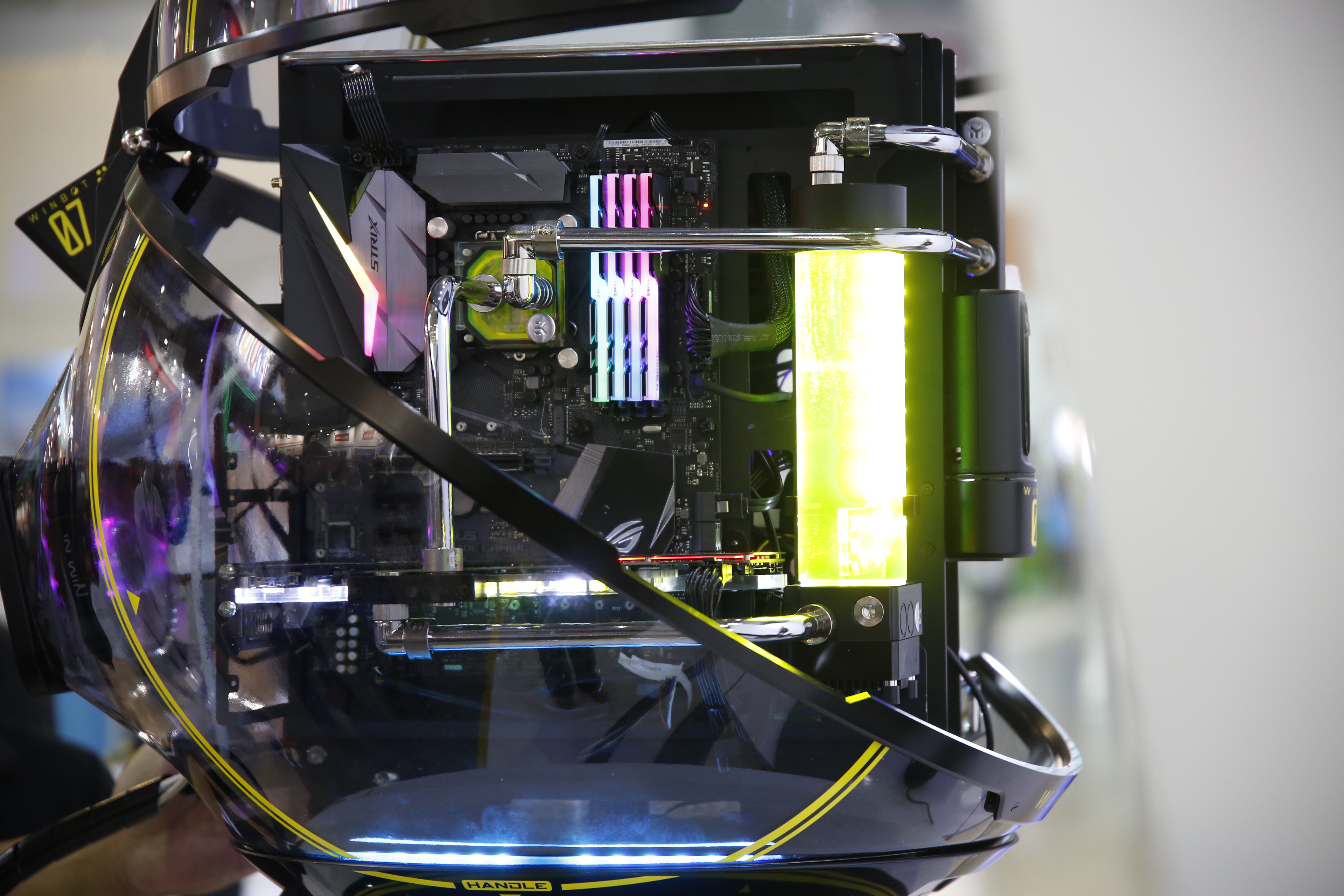
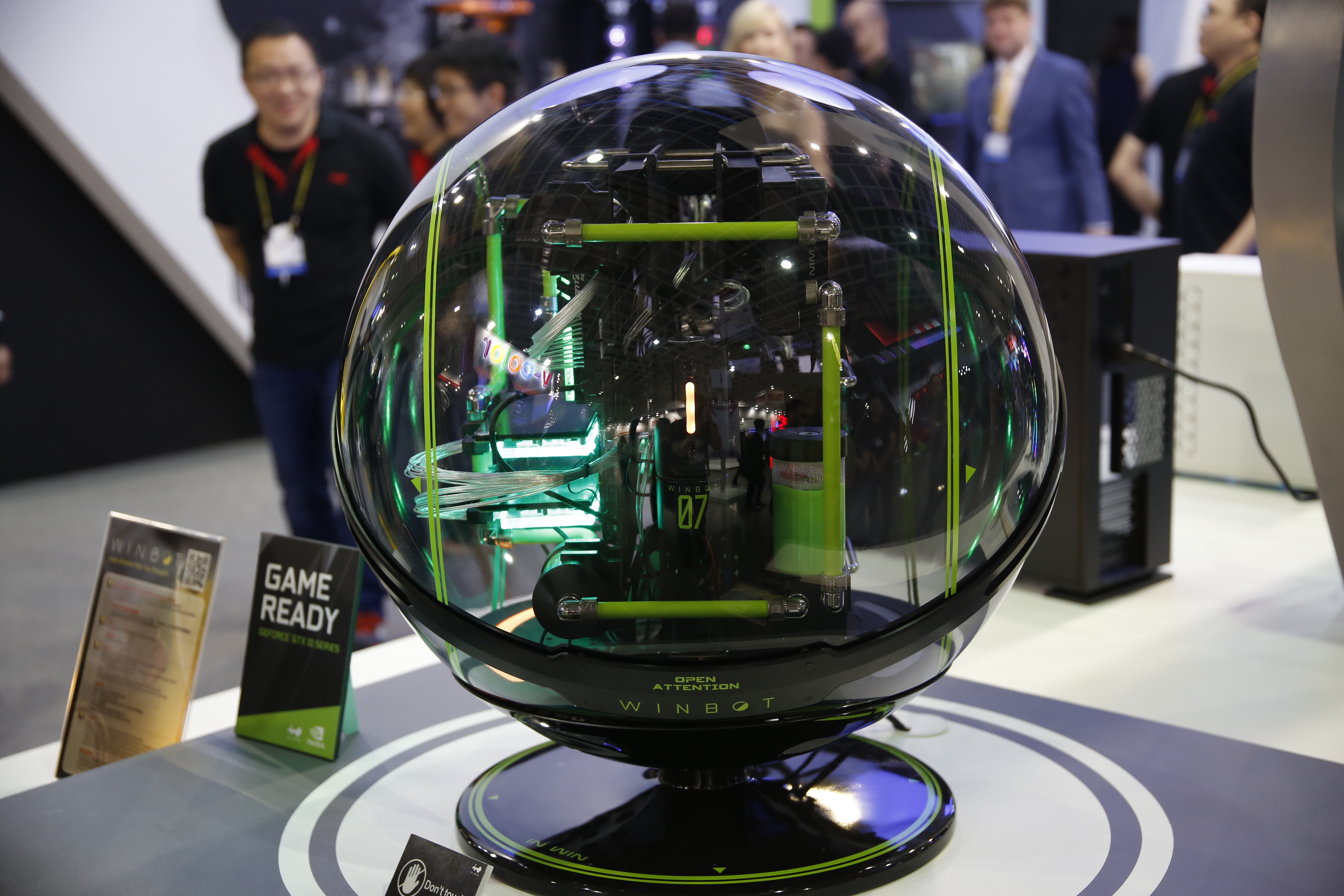
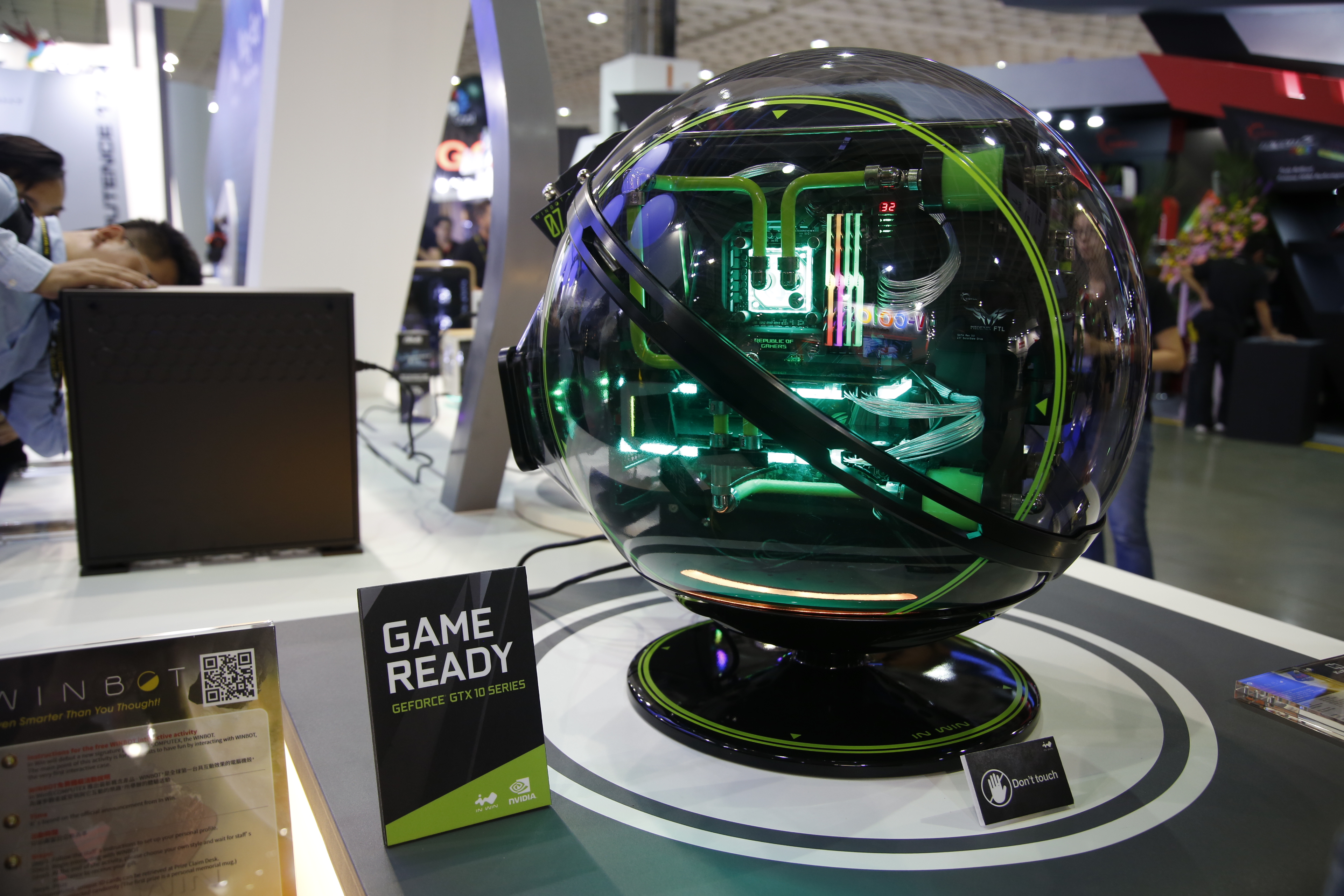
It looks as if quite a bit of dust could be harvested inside this dome, but In-Win representatives were skeptical of our skepticism, saying that there was plenty of fan filtration. Either way, the globe opens like a car window would--you hold down an electrical button--so it’s easy enough to modify, clean, and otherwise admire.
The company claimed that Winbot includes a 360-degree display (which really just means that it’s a sphere), and it's made of acrylic sitting atop a metal base. However, the Winbot includes a dual camera module coupled with proprietary software that lets you provide voice commands and gestures, and it even uses facial recognition.
A fair question might be “Why?”
It’s a concept case, which the company is in the habit of teasing (trolling?) us with on a yearly basis at Computex. But to attempt an answer anyway, In-Win was demonstrating using hand gestures to rotate the case in either direction as well as voice commands that required using an Amazon Alexa to do the same.
Get Tom's Hardware's best news and in-depth reviews, straight to your inbox.
"Because it can," might therefore be one answer.
The facial recognition has some immediate and recognizable value, for things like authentication. Certainly, too, a camera has many relevant uses in today’s ubiquitous video applications.
One of the voice commands you can give is to ask the Winbot to take photos--the company suggested that these would be of you playing a game (or quitting in a rage), but we're not quite sure what the utility of that would be.
As for price, as the saying goes, if you have to ask...
As for availability, if price is no object...we're sure it can be yours within reason.
The Floating
The Floating is all about the RGB, and what better way to show off all of your blinged-out PC parts than by not confining them to the pesky structural barriers of a case. That is, what if your case wasn’t a case but just a series of supports upon which to attach your motherboard, your PSU, and your extra cooling getup.
The Floating was being unhoused to showcase an Asus Crosshair VI motherboard with individually addressable RGB lights, coupled with In-Win’s Aurora fans that have their own individually addressable RGB lights, and all of the components sitting on structures outlined in addressable RGB lights. If this is starting to sound a bit like RGB lights that have RGB lights, well it’s not quite that severe. But you'd better be all in on RGB lights.
The main un-case structure is made of reflective tempered glass. In the upper left side, there’s an LED read-out of sensor metrics (temperature, fan speed, you know the drill). Other structural parts are made of aluminum, and being an open case, it can support up to E-ATX motherboards, graphic cards up to 360mm, and PSUs up to 220mm. It’s got room for eight PCIe slots, and it includes two 2.5” drive bays. There’s space for three 120mm fans or a 360mm radiator on either side and for a heatsink up to infinity, according to the provided materials. (Yes, the company material actually says "infinity." Please let us know if you find one in that length.) You also get a USB 3.1 Gen 2 Type C port, plus three USB 3.0 ports and HD audio.
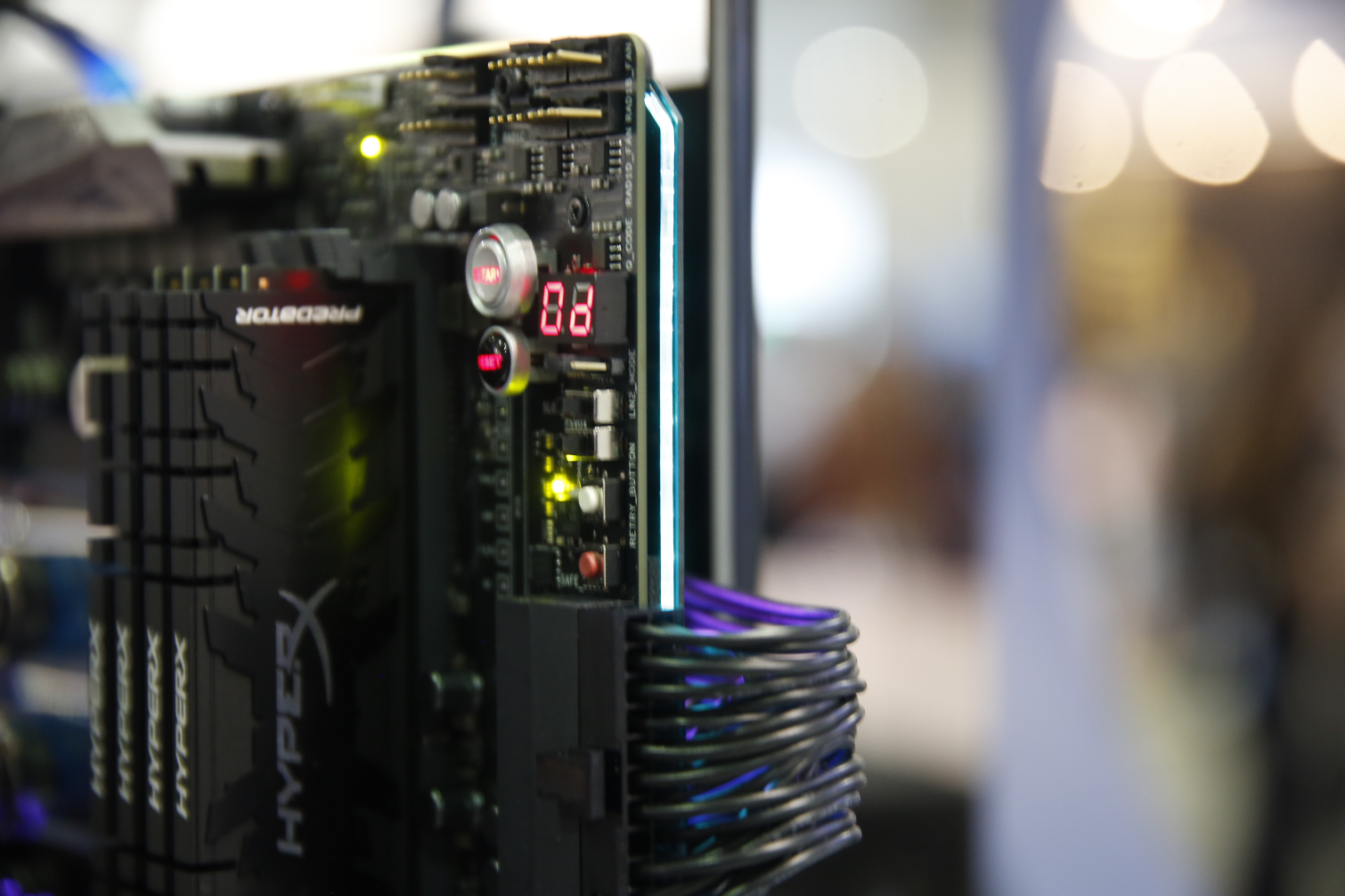
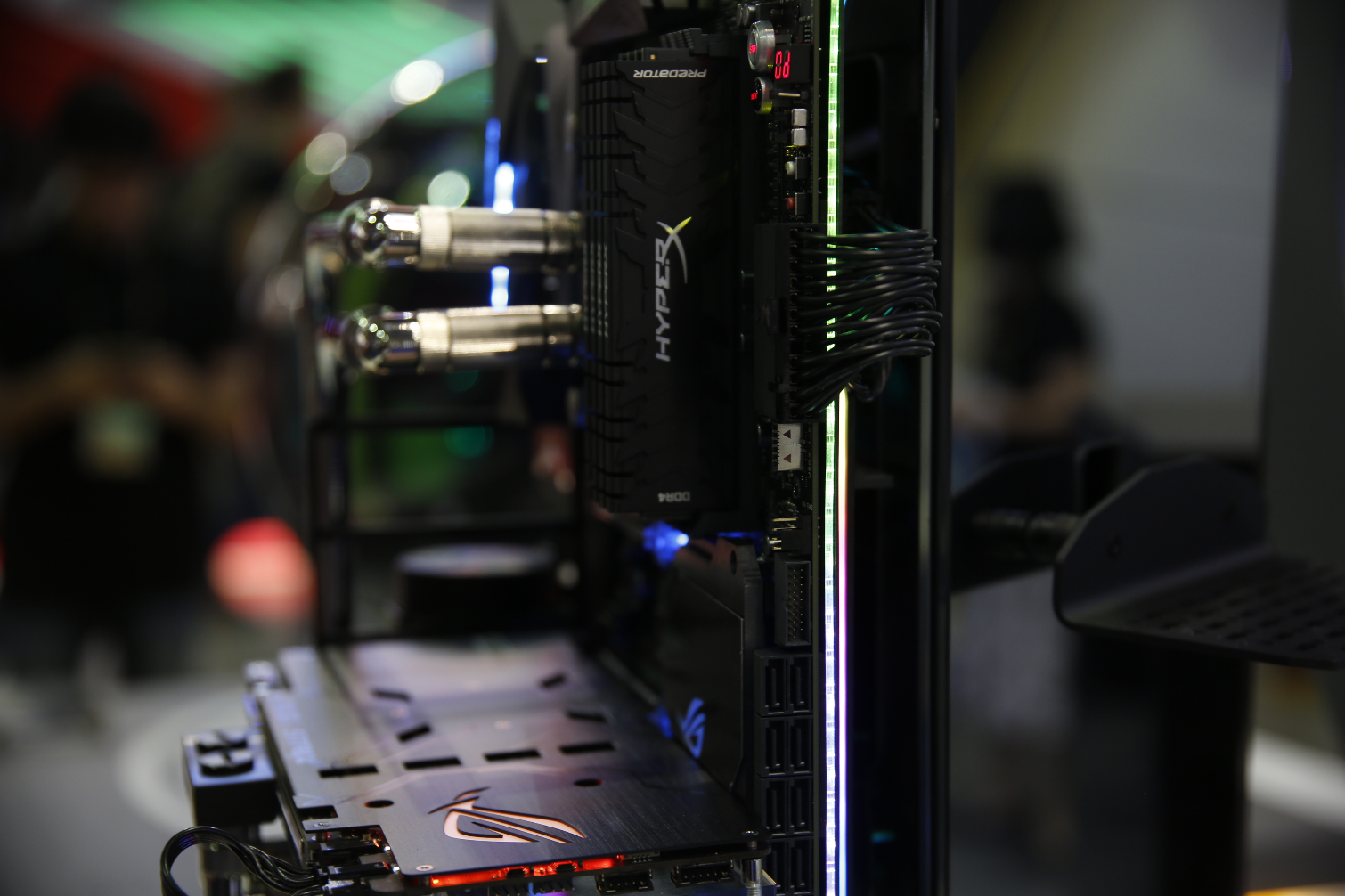
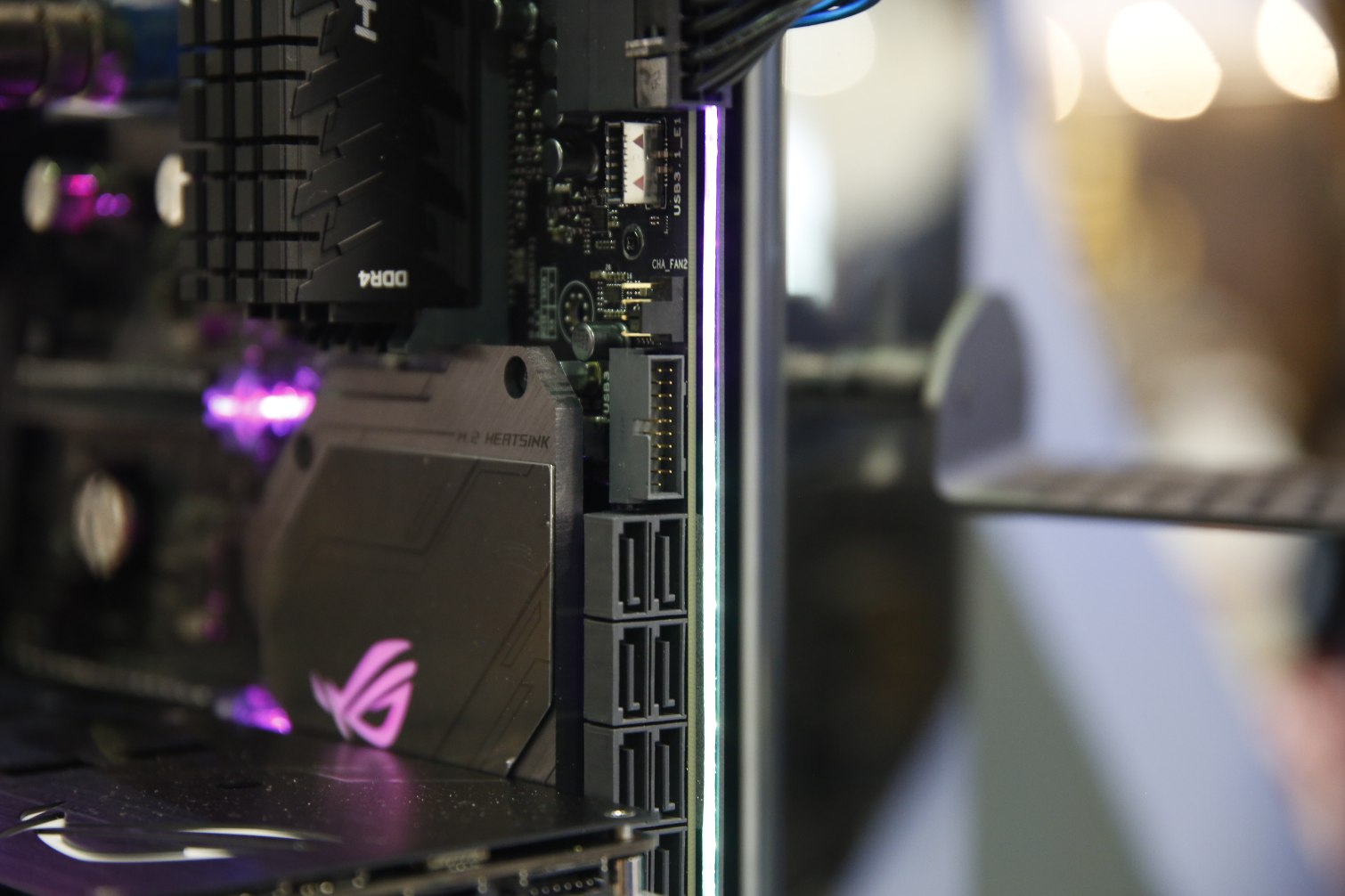

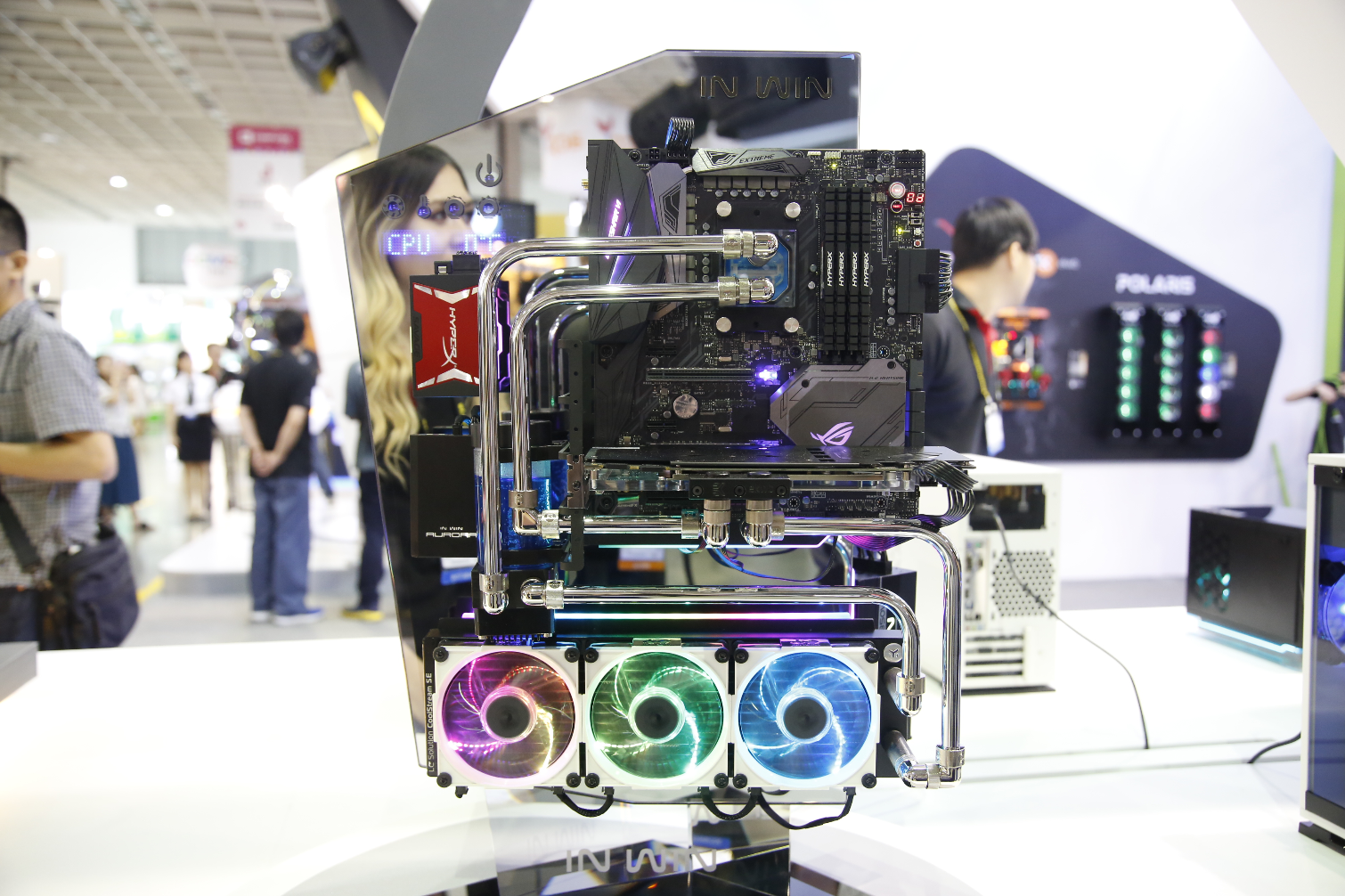
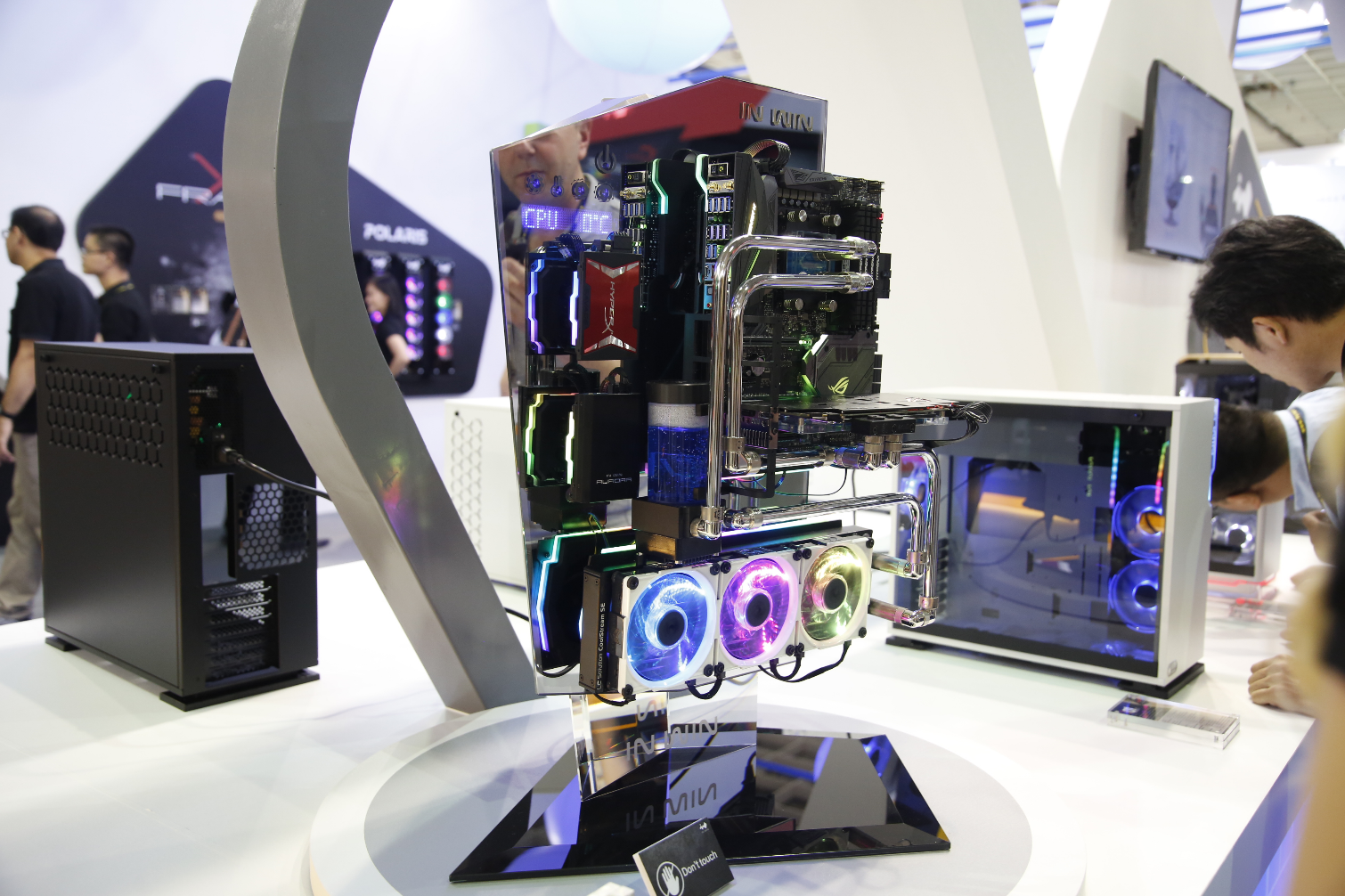
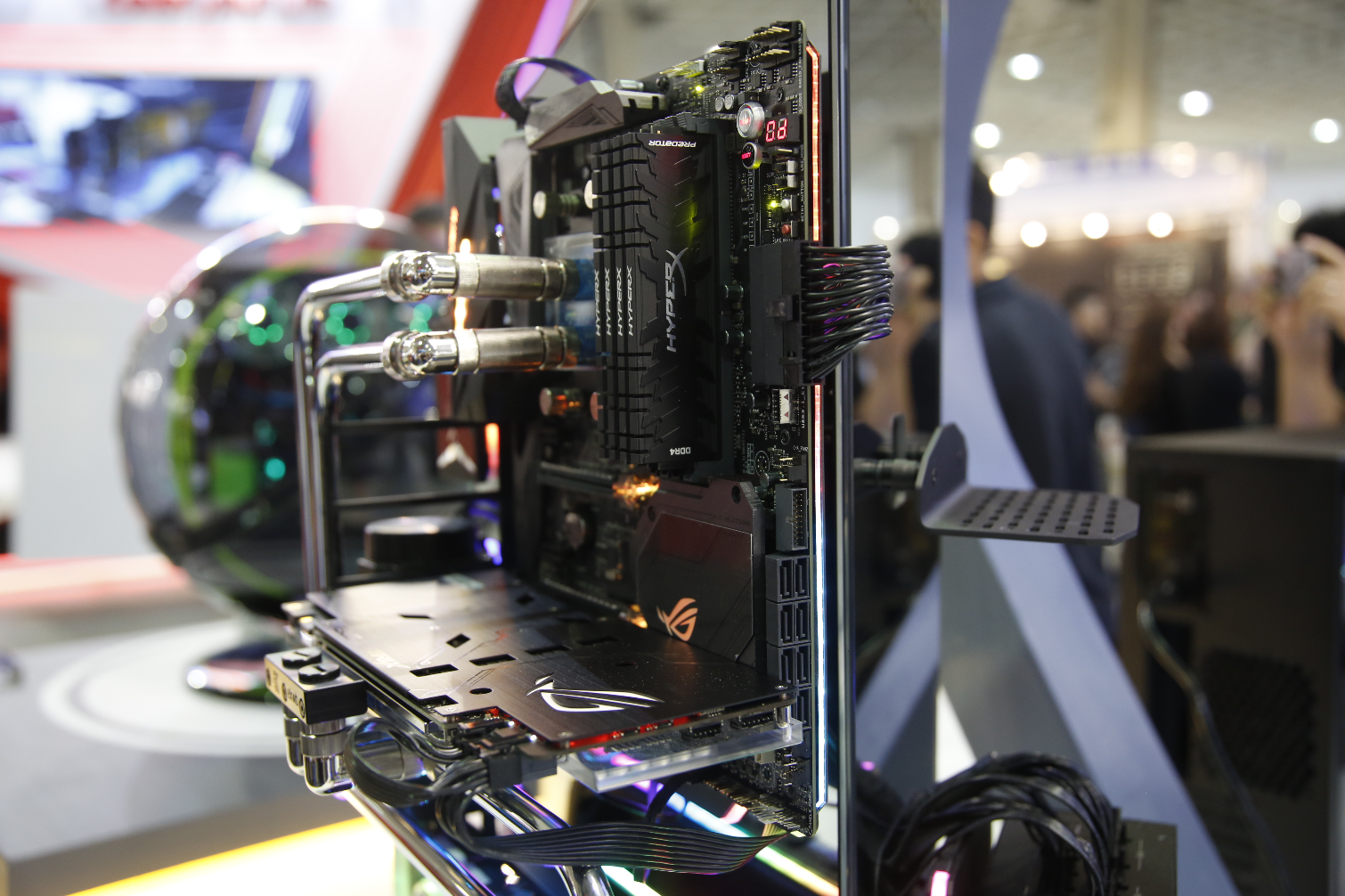

For these kinds of cases, we got the impression that In-Win sells them in the hundreds, assuming they come to market. The Winbot and Floating are being trialed at Computex in an attempt to get customer feedback. The company was not able to talk about availability or pricing.
-
FrozenGerbil I purchased TWO Tou 2.0 cases this year, each priced at $1800, and I absolutely love them (even though I think they would be more reasonably priced at $1200 to $1400). They were my first two In Win case builds. I might purchase the Winbot if it was priced at $1500. But if the Winbot is priced at $2000 or more, then it is overpriced for the simple reason that the globe is made out of plexiglass, instead of tempered glass. Let's face it... *ALL* plexiglass and acrylic will eventually accumulate scratches across their surface unless you never touch the surfaces with your hands or any towels, microfiber fabrics, etc. And tiny scratches are even more visible on clear plexiglass/acrylic compared to opaque painted acrylic surfaces. In Win really should have used tempered glass on their Signature series Winbot, which can be shaped into a round globe like that. Plexiglass reduces the Winbot's weight, but it also gives it a very cheap feel, especially when it eventually starts getting tiny scratches on it. The Winbot really should have used a tempered glass sphere! The Floating case is made for people who live in clean room environments or are OCD about dusting the open frame every day, and no small children or pets are allowed near their PC :-) In Win makes amazing artistic cases, but they always ignore cable management and dust management on their most expensive cases - cases like the $1800 Tou 2.0 do not include any dust filters or rubber cable grommets, which In Win should have included and then let the buyer decide whether to use them or not. Their new wood-paneled mini-ITX Gaming Cube A1 and In Win 806 are far more practical (and probably far more reasonably priced) and both of these new wood-paneled cases would make excellent HTPC builds because they look very stylish sitting in a living room or bedroom environment. Just as In Win started the tempered glass craze, I predict that In Win will now start a new craze in wood-paneled PC cases. I may buy the A1 or 806 for an HTPC build.Reply -
bit_user Winbot: In general, it'd make much more sense to use a stereoscopic PTZ surveillance camera, rather than mount camera on your PC case and motorize it. Aside from the cameras, I guess there are probably reasons to have a motorized case, though I'm not readily able to think of any.Reply
The sphere is certainly unique. Basically, the whole case is a window. And your PC is inside it. Perhaps taking the name "In-Win" a bit too literally.
You realize they're joking about the 2018 model, right? PC-based drone platforms almost certainly already exist (although I'd be surprised to find anything bigger than mini-ITX, due to weight & power constraints), but In-Win is not going to have a case that washes your dishes and folds your clothes. -
bit_user Reply
Dear price-insensitive wall of text: I'm sure you contain many great and insightful points, but you're simply too dense and impenetrable.19754192 said:I purchased TWO Tou 2.0 cases this year, each priced at $1800, and I absolutely love them (even though I think they would be more reasonably priced at $1200 to $1400). They were my first two In Win case builds. I might purchase the Winbot if it was priced at $1500. But if the Winbot is priced at $2000 or more, then it is overpriced for the simple reason that the globe is made out of plexiglass, instead of tempered glass. Let's face it... *ALL* plexiglass and acrylic will eventually accumulate scratches across their surface unless you never touch the surfaces with your hands or any towels, microfiber fabrics, etc. And tiny scratches are even more visible on clear plexiglass/acrylic compared to opaque painted acrylic surfaces. In Win really should have used tempered glass on their Signature series Winbot, which can be shaped into a round globe like that. Plexiglass reduces the Winbot's weight, but it also gives it a very cheap feel, especially when it eventually starts getting tiny scratches on it. The Winbot really should have used a tempered glass sphere! The Floating case is made for people who live in clean room environments or are OCD about dusting the open frame every day, and no small children or pets are allowed near their PC :-) In Win makes amazing artistic cases, but they always ignore cable management and dust management on their most expensive cases - cases like the $1800 Tou 2.0 do not include any dust filters or rubber cable grommets, which In Win should have included and then let the buyer decide whether to use them or not. Their new wood-paneled mini-ITX Gaming Cube A1 and In Win 806 are far more practical (and probably far more reasonably priced) and both of these new wood-paneled cases would make excellent HTPC builds because they look very stylish sitting in a living room or bedroom environment. Just as In Win started the tempered glass craze, I predict that In Win will now start a new craze in wood-paneled PC cases. I may buy the A1 or 806 for an HTPC build.
Sincerely,
TL;DR -
Virtual_Singularity Reply19754192 said:I purchased TWO Tou 2.0 cases this year, each priced at $1800, and I absolutely love them (even though I think they would be more reasonably priced at $1200 to $1400). They were my first two In Win case builds. I might purchase the Winbot if it was priced at $1500. But if the Winbot is priced at $2000 or more, then it is overpriced for the simple reason that the globe is made out of plexiglass, instead of tempered glass. Let's face it... *ALL* plexiglass and acrylic will eventually accumulate scratches across their surface unless you never touch the surfaces with your hands or any towels, microfiber fabrics, etc. And tiny scratches are even more visible on clear plexiglass/acrylic compared to opaque painted acrylic surfaces. In Win really should have used tempered glass on their Signature series Winbot, which can be shaped into a round globe like that. Plexiglass reduces the Winbot's weight, but it also gives it a very cheap feel, especially when it eventually starts getting tiny scratches on it. The Winbot really should have used a tempered glass sphere! The Floating case is made for people who live in clean room environments or are OCD about dusting the open frame every day, and no small children or pets are allowed near their PC :-) In Win makes amazing artistic cases, but they always ignore cable management and dust management on their most expensive cases - cases like the $1800 Tou 2.0 do not include any dust filters or rubber cable grommets, which In Win should have included and then let the buyer decide whether to use them or not. Their new wood-paneled mini-ITX Gaming Cube A1 and In Win 806 are far more practical (and probably far more reasonably priced) and both of these new wood-paneled cases would make excellent HTPC builds because they look very stylish sitting in a living room or bedroom environment. Just as In Win started the tempered glass craze, I predict that In Win will now start a new craze in wood-paneled PC cases. I may buy the A1 or 806 for an HTPC build.
Spacing & paragraphs are any writer's friend. I hadn't realized InWin released the Tou 2.0, nor how expensive it is. InWin is one of those companies that, due their enormous successes elsewhere, are in a unique position to develop some of the most imaginative looking cases, & even succeed with the bold risk involved enough to do better than break even.
The thing about most of the computer cases that saddens me today is their transition from use of reliable, protective materials such as aluminum, to plastic, tempered glass, plexiglass, etc. It's not merely about elegance, functionality & simplicity.
There's more to what makes a good case, & increasingly, case manufacturers are headed toward not even offering consumers an option for cases surrounded entirely by metal on their facades, & outer shells. -
bit_user Okay, let's try being an editor...Reply
...that wasn't so bad. With some added whitespace & formatting, it turned out to be more coherent than I thought. The second paragraph has some redundant points, but that's understandable for an unbroken stream-of-consciousness type of piece.19754192 said:I purchased TWO Tou 2.0 cases this year, each priced at $1800, and I absolutely love them (even though I think they would be more reasonably priced at $1200 to $1400). They were my first two In Win case builds.
I might purchase the Winbot if it was priced at $1500. But if the Winbot is priced at $2000 or more, then it is overpriced for the simple reason that the globe is made out of plexiglass, instead of tempered glass. Let's face it... all plexiglass and acrylic will eventually accumulate scratches across their surface unless you never touch the surfaces with your hands or any towels, microfiber fabrics, etc. And tiny scratches are even more visible on clear plexiglass/acrylic compared to opaque painted acrylic surfaces. In Win really should have used tempered glass on their Signature series Winbot, which can be shaped into a round globe like that. Plexiglass reduces the Winbot's weight, but it also gives it a very cheap feel, especially when it eventually starts getting tiny scratches on it. The Winbot really should have used a tempered glass sphere!
The Floating case is made for people who live in clean room environments or are OCD about dusting the open frame every day, and no small children or pets are allowed near their PC :-)
In Win makes amazing artistic cases, but they always ignore cable management and dust management on their most expensive cases - cases like the $1800 Tou 2.0 do not include any dust filters or rubber cable grommets, which In Win should have included and then let the buyer decide whether to use them or not.
Their new wood-paneled mini-ITX Gaming Cube A1 and In Win 806 are far more practical (and probably far more reasonably priced) and both of these new wood-paneled cases would make excellent HTPC builds because they look very stylish sitting in a living room or bedroom environment. Just as In Win started the tempered glass craze, I predict that In Win will now start a new craze in wood-paneled PC cases. I may buy the A1 or 806 for an HTPC build.
